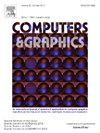Three dimensional forest dynamic evolution based on hydraulic erosion and forest fire disturbance
IF 2.5
4区 计算机科学
Q2 COMPUTER SCIENCE, SOFTWARE ENGINEERING
引用次数: 0
Abstract
Forest ecosystems can change due to both human activities and climatic factors, particularly shifts in temperature, rain, and wind patterns. Topographic changes caused by rains and structural shifts induced by forest fires represent two primary disturbance events in forest environments. These disturbances are influenced by weather factors and exhibit complex effects on forest dynamics, characterized by regional, seasonal, and stochastic variations. Consequently, examining the interactions between weather patterns and forest evolution through computer graphics holds significant research value. Vegetation and terrain modeling are fundamental to generating realistic forest landscapes. We employ physically-based procedural erosion to simulate geomorphological erosion processes, while further exploring vegetation-terrain interactions to create high-resolution landscapes. Using data from real forest landscapes, we incorporate fire ignition points to simulate forest fire occurrence and spread by modeling wildfire combustion and heat transfer processes, which accurately capture fire dynamics. This enables the simulation of forest fire scenarios under various environmental conditions, allowing us to assess the combined impacts of rainfall and forest fires on forest landscapes. Additionally, the model ensures real-time interaction, supporting the creation of immersive and responsive landscape simulations.

求助全文
约1分钟内获得全文
求助全文
来源期刊

Computers & Graphics-Uk
工程技术-计算机:软件工程
CiteScore
5.30
自引率
12.00%
发文量
173
审稿时长
38 days
期刊介绍:
Computers & Graphics is dedicated to disseminate information on research and applications of computer graphics (CG) techniques. The journal encourages articles on:
1. Research and applications of interactive computer graphics. We are particularly interested in novel interaction techniques and applications of CG to problem domains.
2. State-of-the-art papers on late-breaking, cutting-edge research on CG.
3. Information on innovative uses of graphics principles and technologies.
4. Tutorial papers on both teaching CG principles and innovative uses of CG in education.
 求助内容:
求助内容: 应助结果提醒方式:
应助结果提醒方式:


